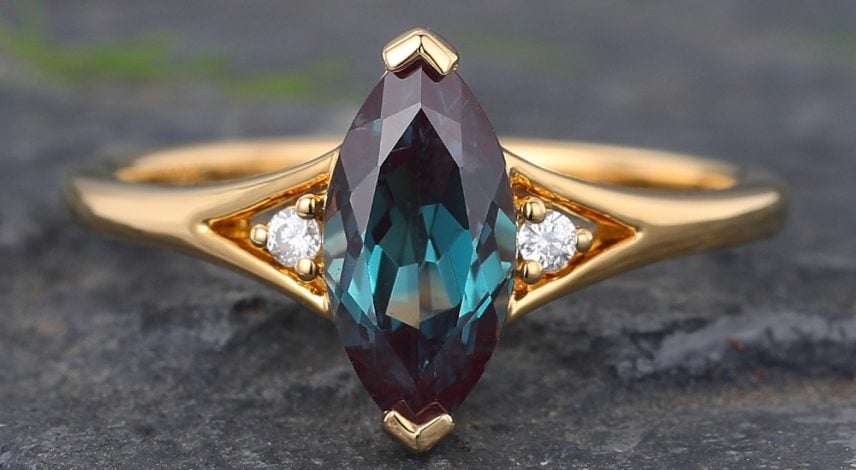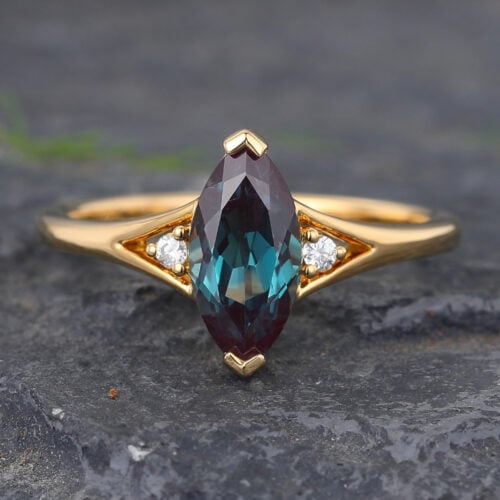


shop BY BAND STYLES
shop BY STONE ARRANGEMENTS
shop BY DESIGN STYLES
shop BY METAL COLOR
shop BY STONE TYPES
shop BY BAND STYLES
shop BY STONE ARRANGEMENTS
shop BY DESIGN STYLES
shop BY METAL COLOR
shop BY STONE TYPES
shop BY BAND STYLES
shop BY STONE ARRANGEMENTS
shop BY STONE TYPES
shop BY METAL COLOR
SHOP BY STYLE
GIFTS BY OCCASION
GIFTS BY PRICE

✚ BY BAND STYLES
✚ BY STONE ARRANGEMENTS

Alexandrite is famous for its mesmerizing color shift, but if you’re considering it for daily wear, one essential question arises: how hard is it? Understanding Alexandrite Hardness is key to knowing whether this gem can stand up to everyday use, especially in jewelry like rings or bracelets that experience frequent contact.
Before diving into the specifics of Alexandrite Hardness, it’s helpful to understand what gemologists mean by “hardness.” Hardness refers to a gem’s resistance to scratching and is measured using the Mohs scale. The higher the rating on this scale, the harder and more scratch-resistant the stone is.
On the Mohs scale of mineral hardness, Alexandrite scores an impressive 8.5 out of 10. This makes it one of the harder gemstones used in jewelry, just below sapphires (9) and diamonds (10). Thanks to this high Alexandrite Hardness, the gem is suitable for most types of jewelry, including daily-wear items like engagement rings or pendants.
The reason Alexandrite Hardness is so important lies in the nature of jewelry. Rings and bracelets are more likely to come into contact with hard surfaces, making scratch resistance a crucial factor. With an 8.5 rating, Alexandrite is resistant to most scratches from common household items, ensuring that it maintains its beauty over time.
When comparing Alexandrite Hardness to other gems, it’s clear that Alexandrite holds its own. It is harder than quartz (7), topaz (8), and spinel (7.5-8), and falls just below sapphire and ruby. This balance of hardness and rarity makes Alexandrite a desirable choice for both durability and uniqueness.
The short answer is yes. The combination of excellent Alexandrite Hardness and strong toughness (resistance to breaking or chipping) makes it suitable for daily use. However, as with any precious gem, some care should still be taken to avoid harsh blows or chemicals.

Despite its high Alexandrite Hardness, proper care ensures longevity. Clean your Alexandrite jewelry with mild soap, warm water, and a soft brush. Avoid ultrasonic cleaners or harsh chemicals, which might affect the stone’s appearance over time. Also, store it separately from other jewelry to prevent scratches.
While Alexandrite Hardness plays a significant role in the gem’s durability, other factors such as cut, setting, and overall gemstone toughness also affect longevity. A protective setting, like a bezel, can enhance durability further, especially in rings.
Lab-created Alexandrite shares the same physical and chemical properties as natural stones, including Alexandrite Hardness. This means that whether you opt for a natural or synthetic version, you’re getting a gem that can endure daily use without significant wear.
To sum it up, Alexandrite Hardness makes this captivating stone a practical choice for fine jewelry. Its color-changing beauty is matched by impressive durability, making it both a stunning and sensible option. Whether set in an engagement ring, pendant, or earrings, Alexandrite offers long-lasting elegance.